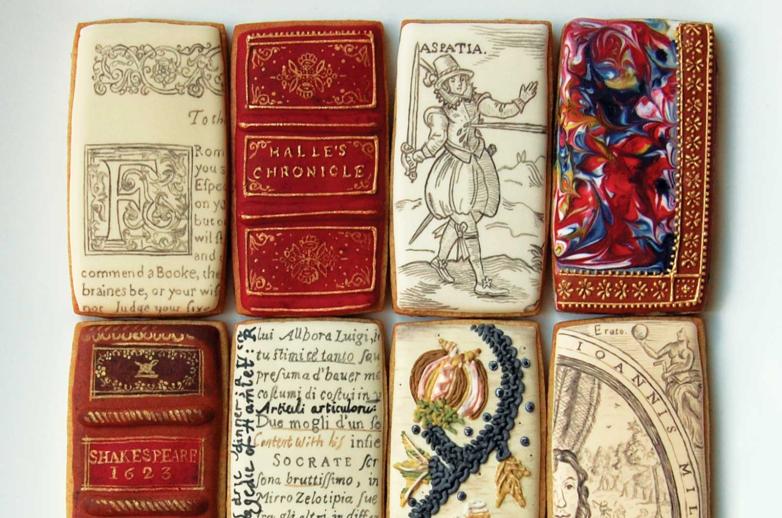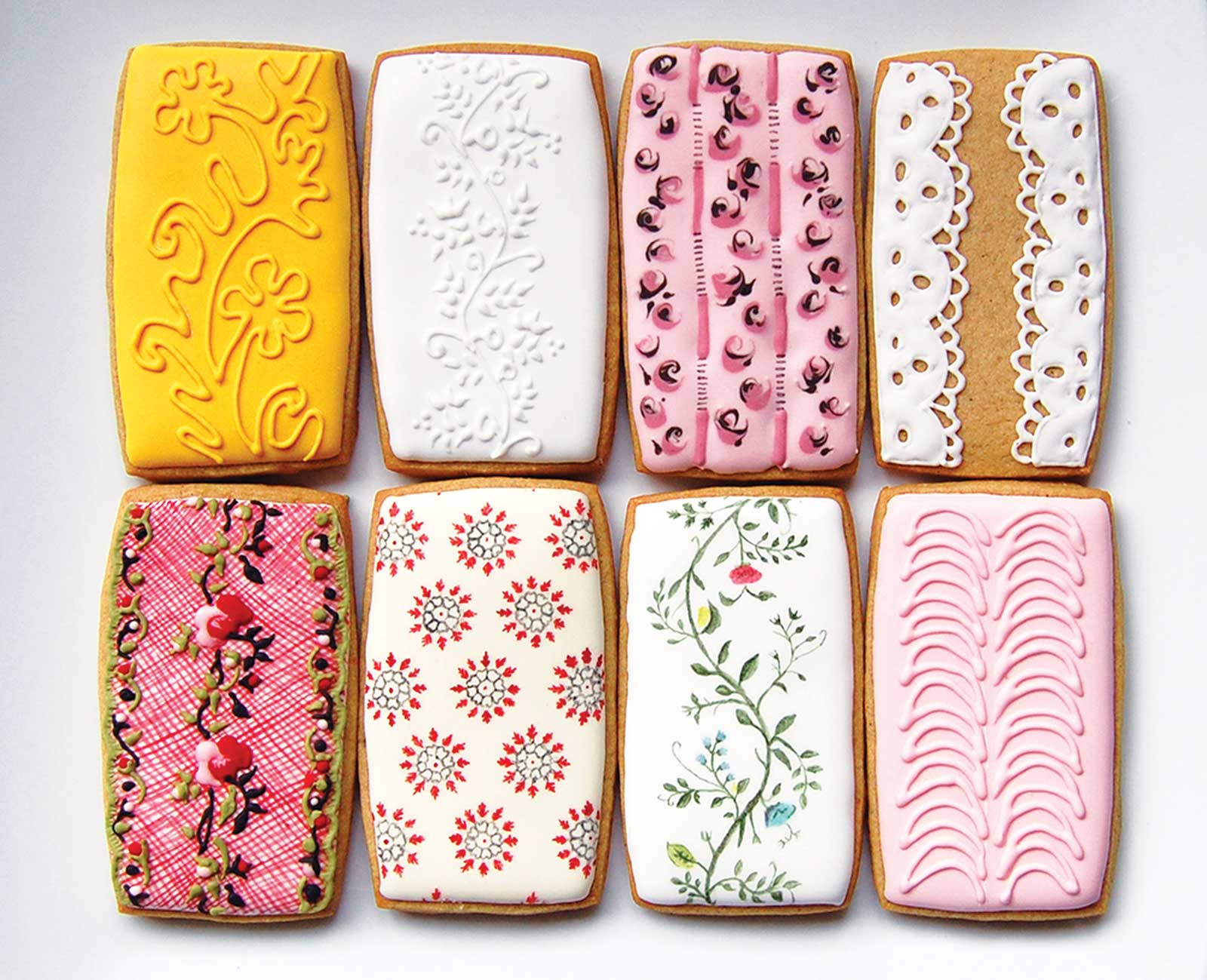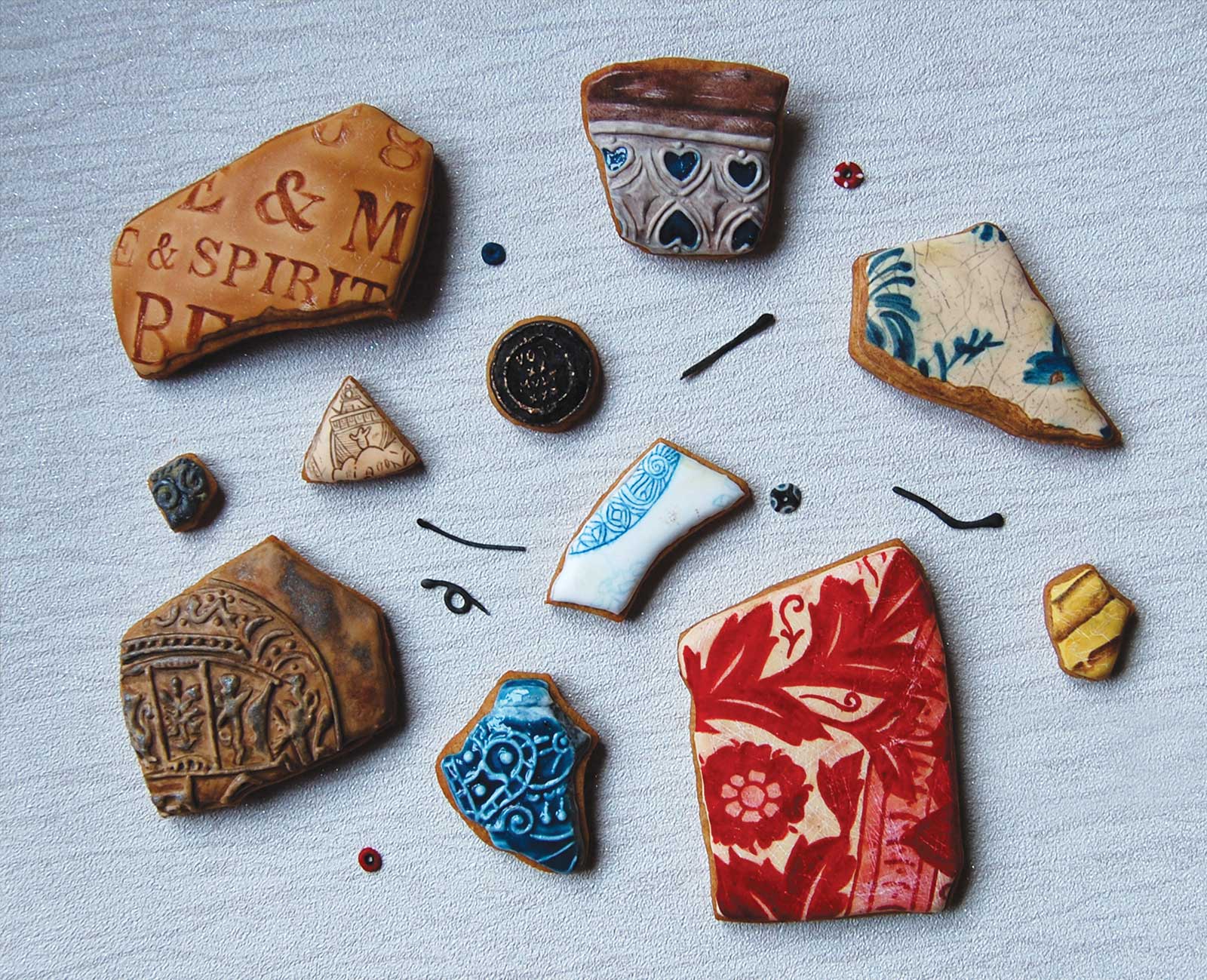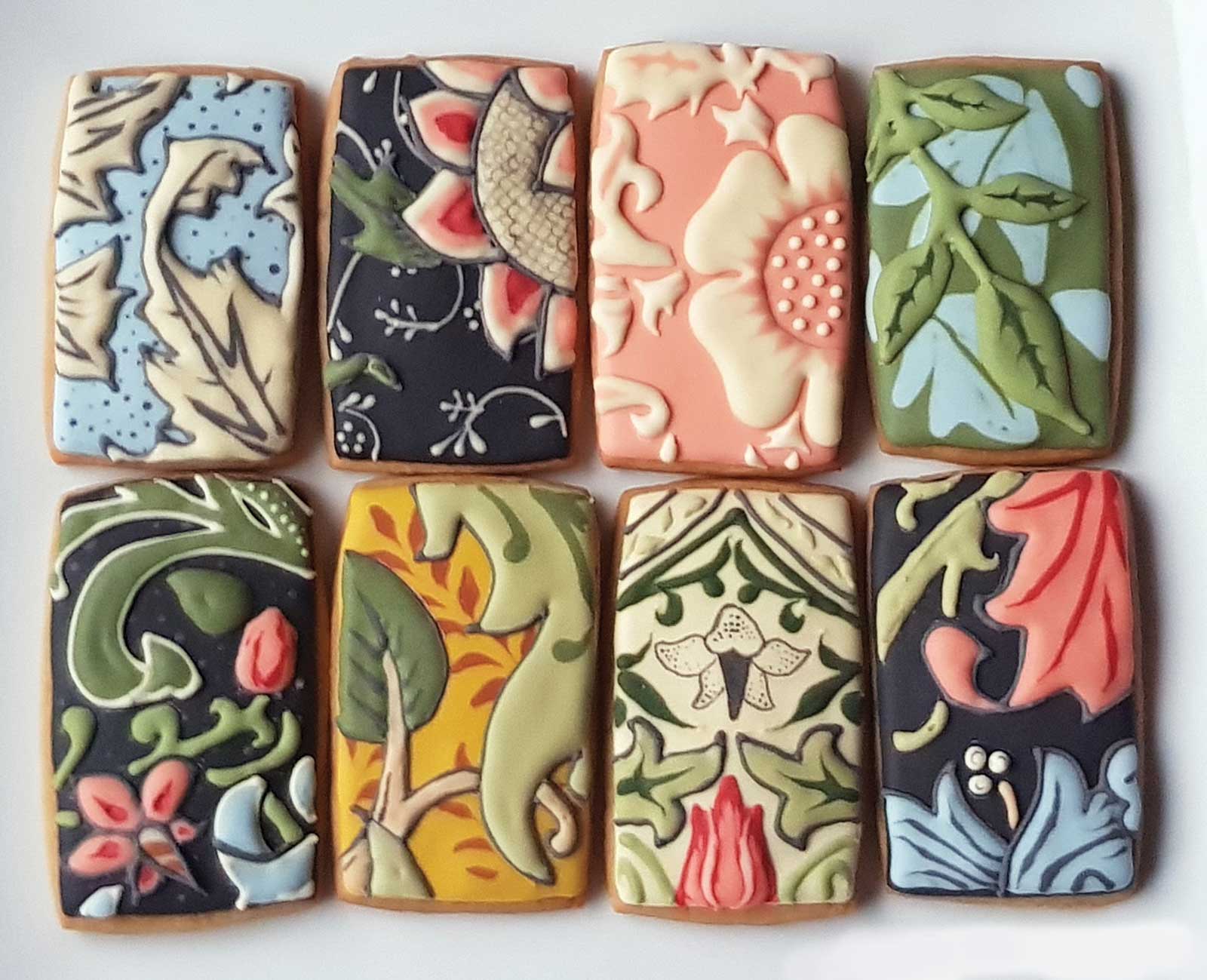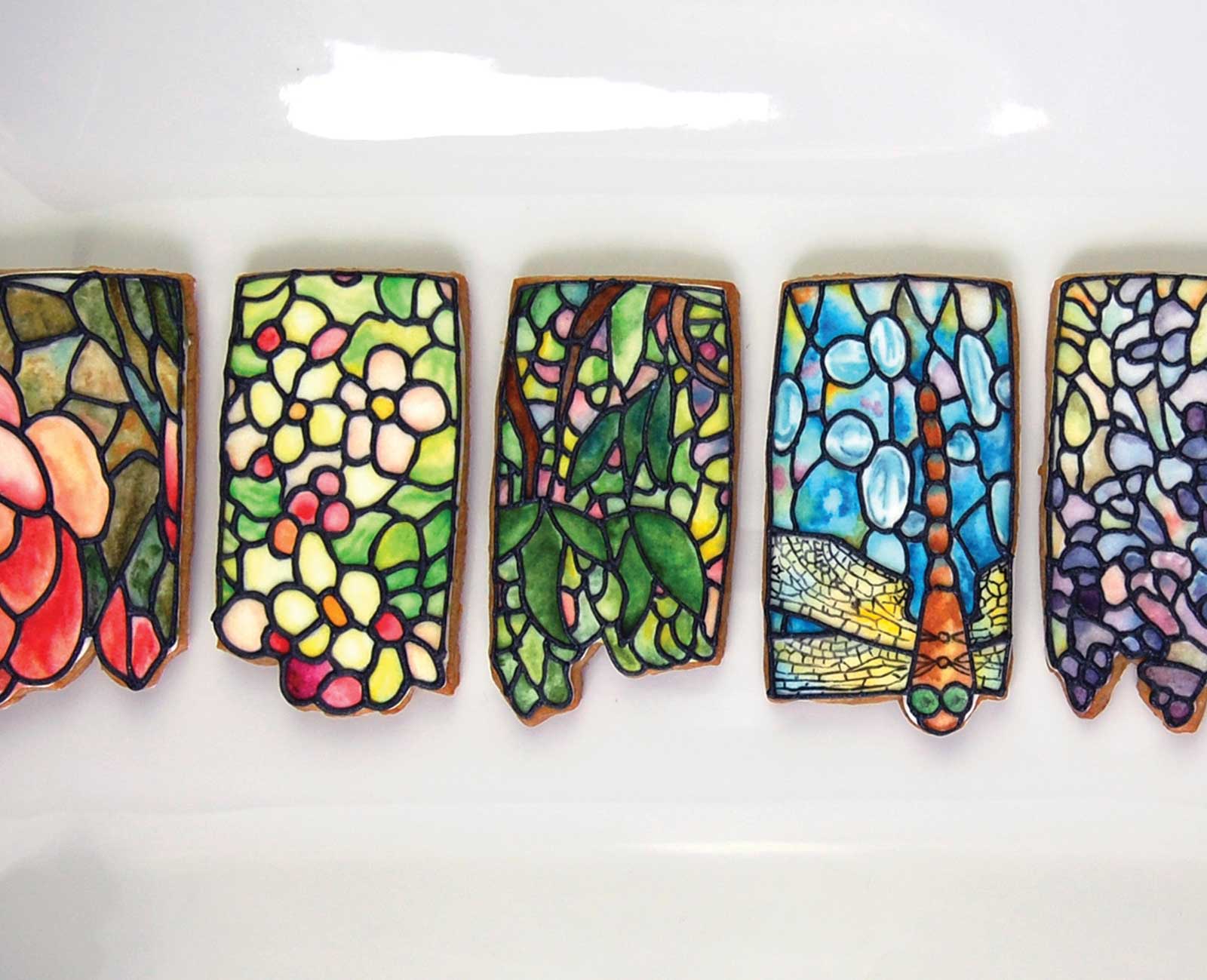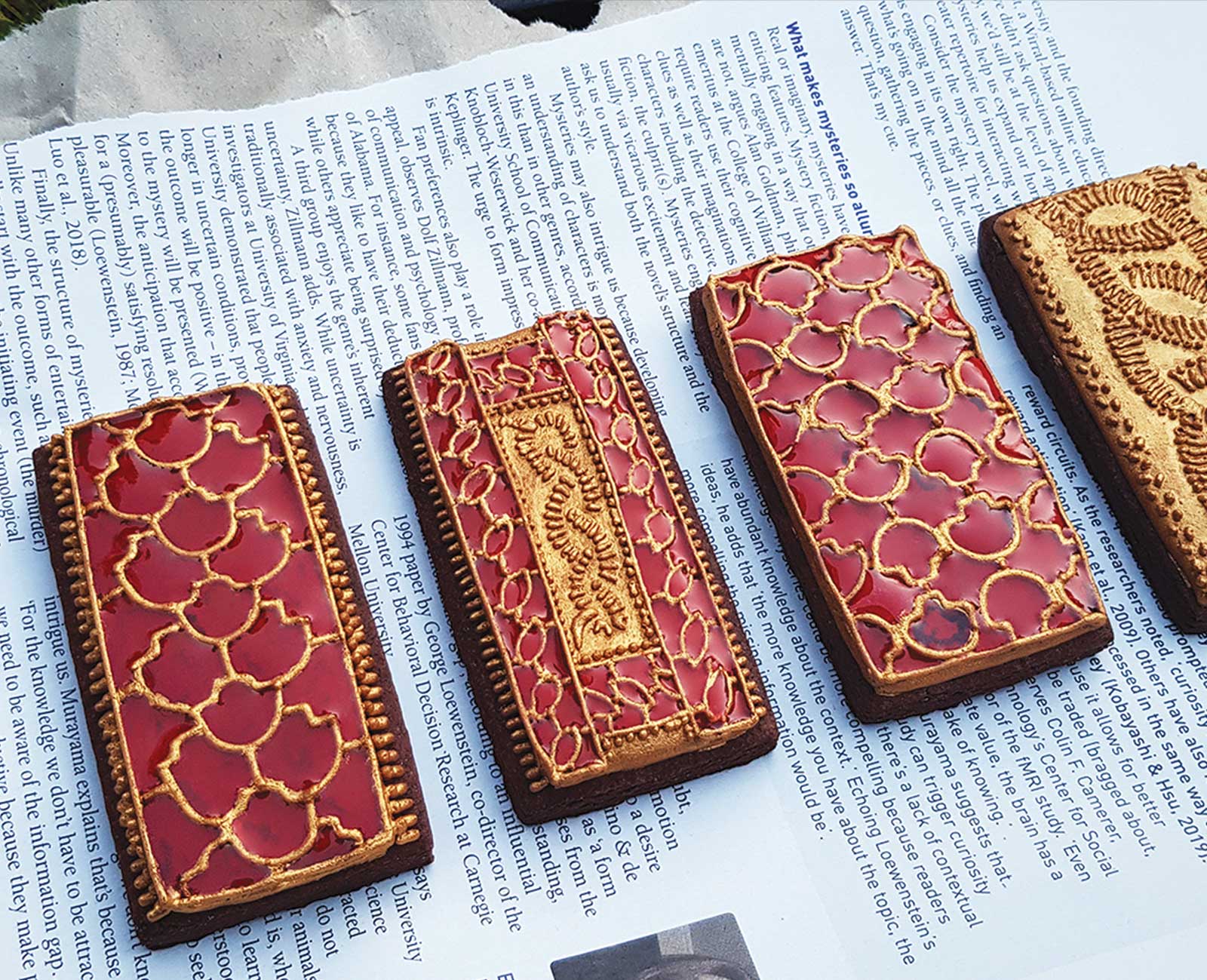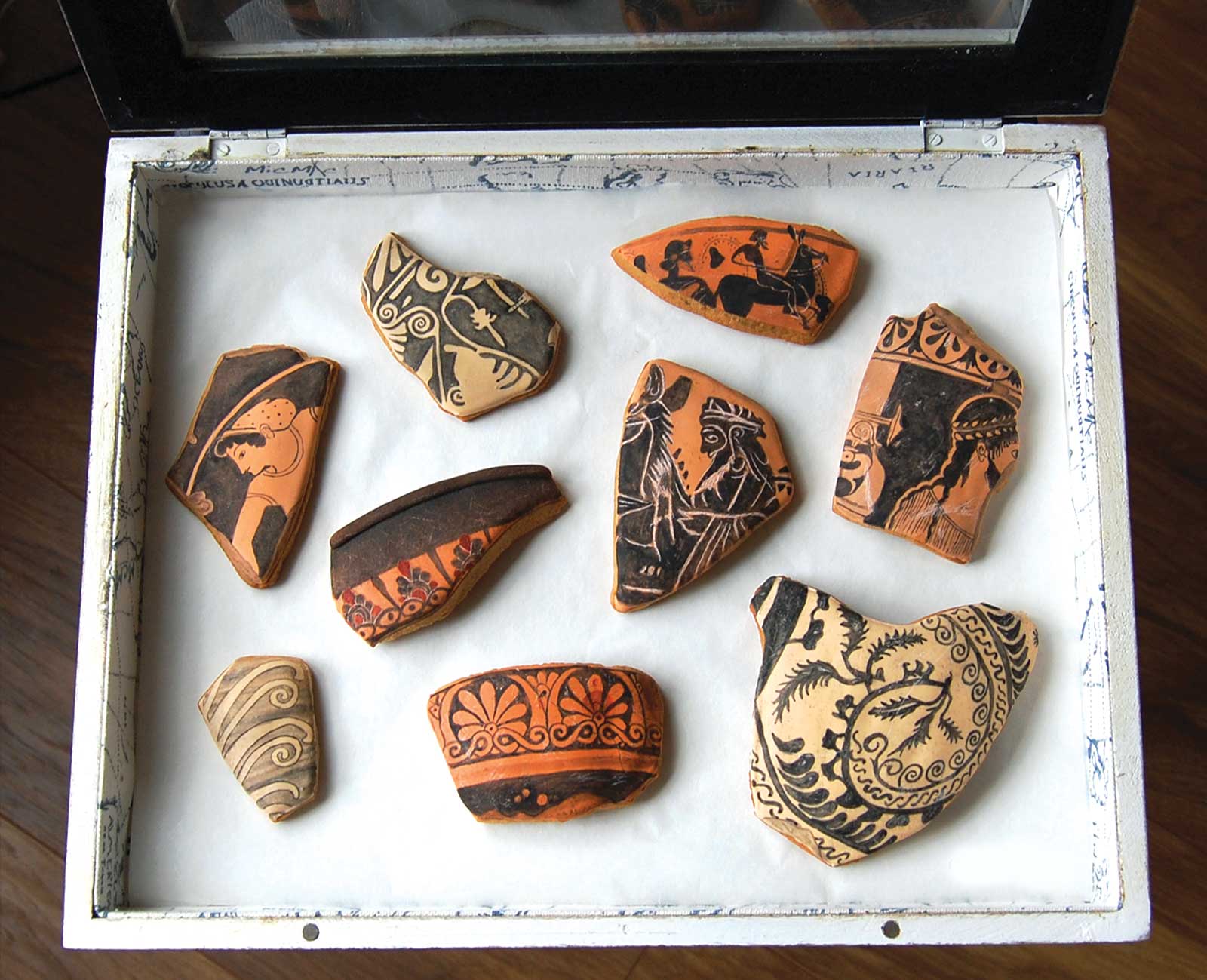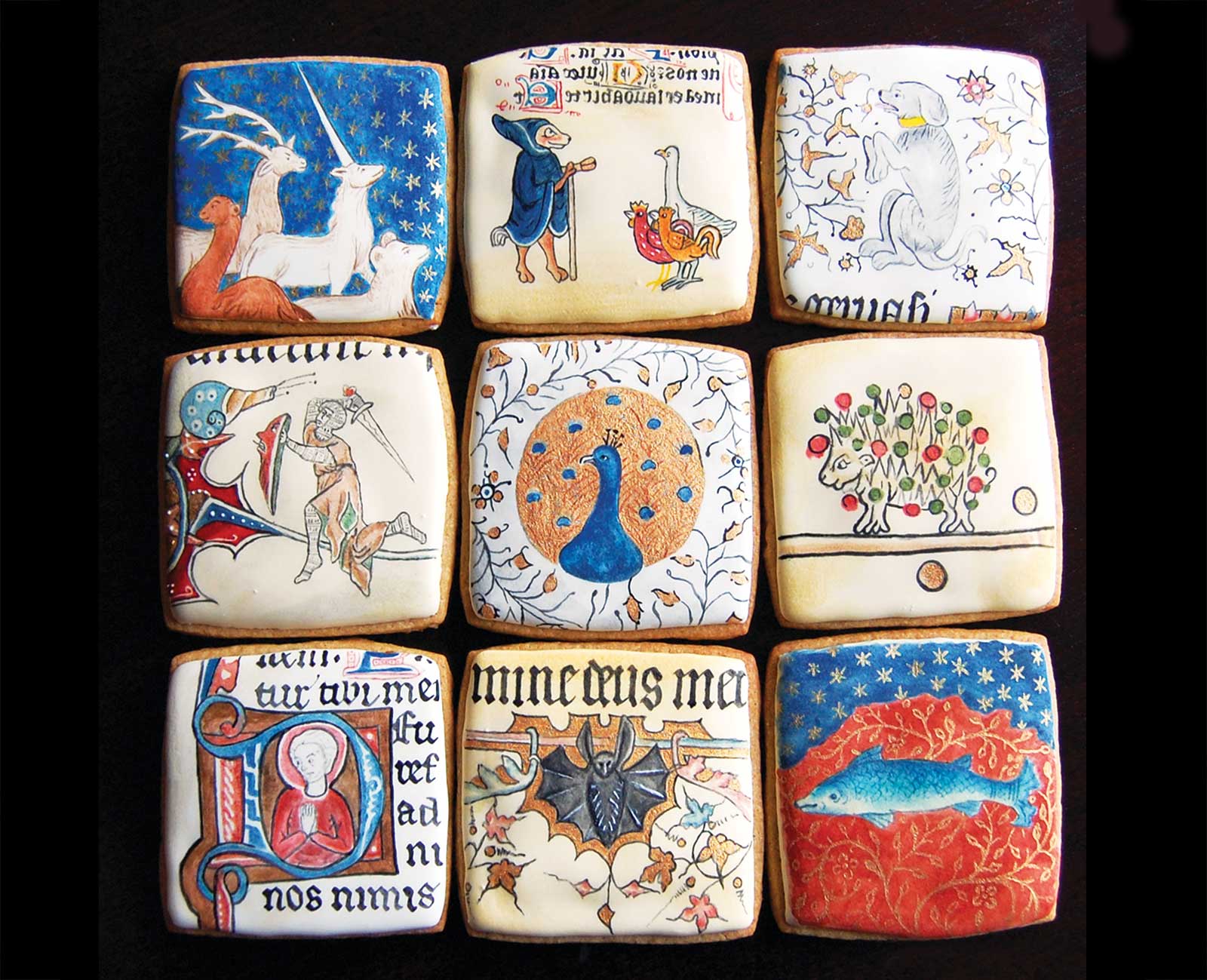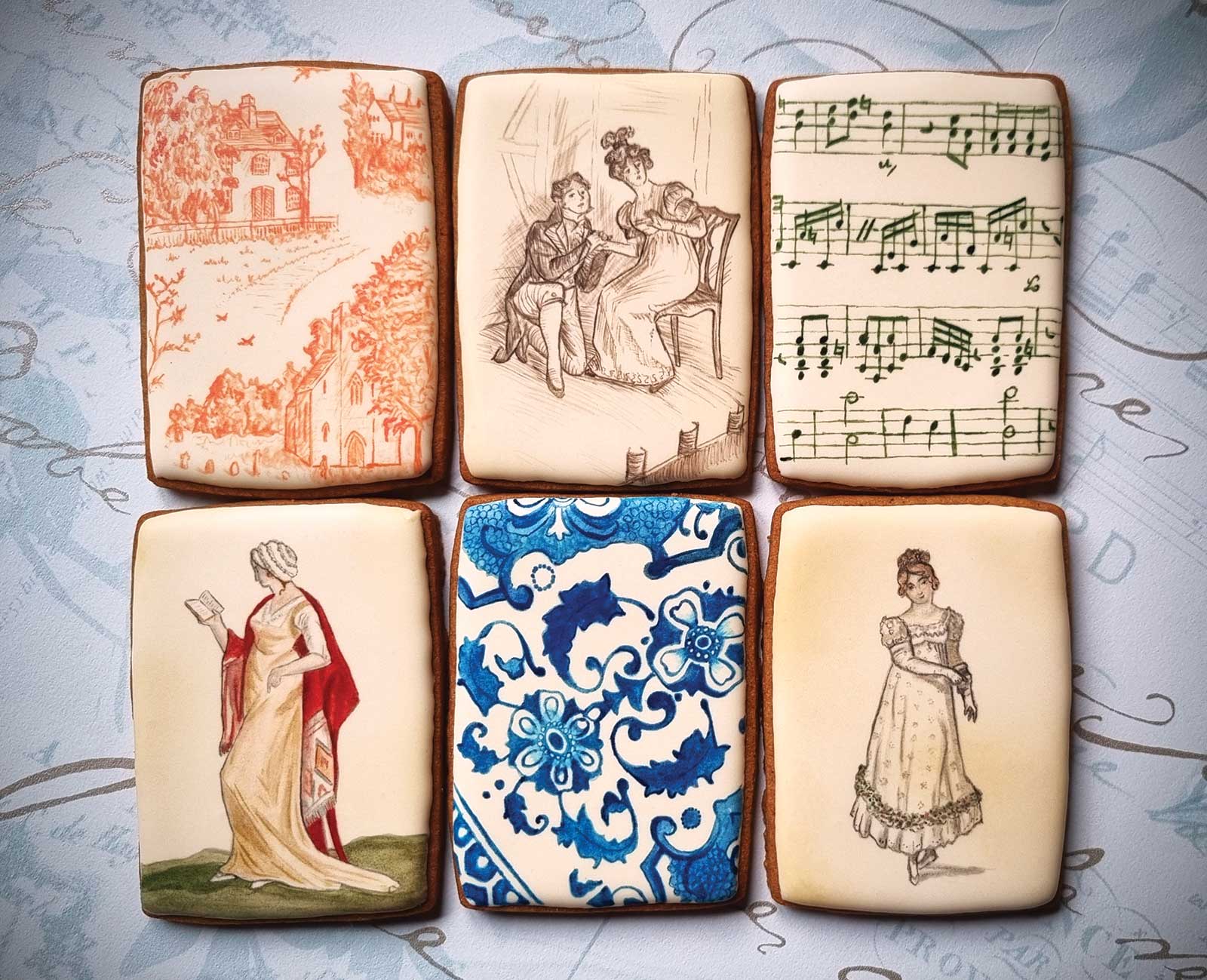Her edible creations depicting illuminated manuscripts rival the real thing and have been widely shared online. “Recreating rare manuscripts and early printed books allows me to explore elements of calligraphy, annotation, gilding, and illustration. Once I have an idea for a set in mind, I’ll spend some time researching design options before beginning the baking and decorating process.”
Her archaeological designs are her favorites, recreating artifacts such as ancient Greek pottery shards, Anglo-Saxon metalwork, Roman coins, and Victorian transferware. She reproduces every scratch, crack, and wear mark in the royal icing so that the cookies look as though they have been in the ground for centuries. Each biscuit takes from one to three hours to complete.
“It’s a satisfying process, and at the end of each project I feel as though I’ve ‘met’ the original artifacts. I do match the flavors to the decoration if I can. So my ‘mudlarking’ cookies, inspired by objects found on the banks of the River Thames, were flavored with sea salt, and I used rose water for the Jane Austen biscuits to make them taste like recipes the author would have been familiar with.”
Her next project is to make a biscuit set inspired by her forthcoming 2022 book, Shakespeare in Elizabethan Costume: ‘Period Dress’ in Twenty-First-Century Performance, which examines how Elizabethan and Jacobean dress is recreated and reinvented in modern stagings of Shakespeare’s plays.
Hawkins said that creating biscuit art has changed the way she thinks about her academic work. “It’s expanded my research interests and has given me a way of connecting with people around the world. I will continue baking as a way of exploring material culture, celebrating museum and archival collections, and bringing the past to life.”
But what happens to the finished biscuits?
“They are photographed from every angle, then eaten! I don’t sell my biscuits, partly because they take such a long time to decorate. I send the finished biscuits to friends, family, and colleagues.”




